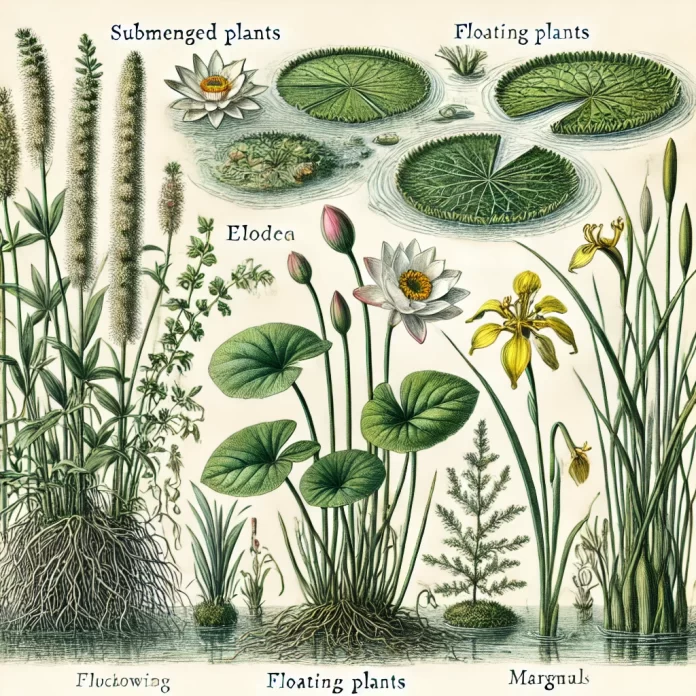Aquatic (adj.)
In botanical terminology, aquatic refers to plants that grow in or are adapted to water environments, including freshwater, brackish, and marine habitats. These plants, known as hydrophytes or aquatic plants, exhibit specialized adaptations for life in water, such as buoyant tissues, reduced or absent roots, and leaves with air spaces for flotation.
Types of Aquatic Plants:
- Submerged: Entirely underwater (e.g., Elodea, Ceratophyllum).
- Floating: Free-floating on the water’s surface, with roots dangling (e.g., Lemna (duckweed), Eichhornia (water hyacinth)).
- Emergent: Rooted in water with leaves and stems extending above the surface (e.g., Typha (cattail), Nelumbo (lotus)).
- Marginal: Growing along the edges of water bodies, often in wet soil (e.g., Iris pseudacorus (yellow flag iris)).
Adaptations of Aquatic Plants:
- Aerenchyma: Specialized air-filled tissues for buoyancy.
- Thin or flexible stems: To move with water currents.
- Reduced cuticle: Since water loss is not a concern.
- Floating leaves: Broad, waxy surfaces to maximize sunlight absorption.
Etymology:
Derived from the Latin aquaticus, meaning “of or belonging to water.”
Aquatic plants play a crucial role in ecosystems, providing oxygen, stabilizing sediments, and offering habitat for aquatic life.




